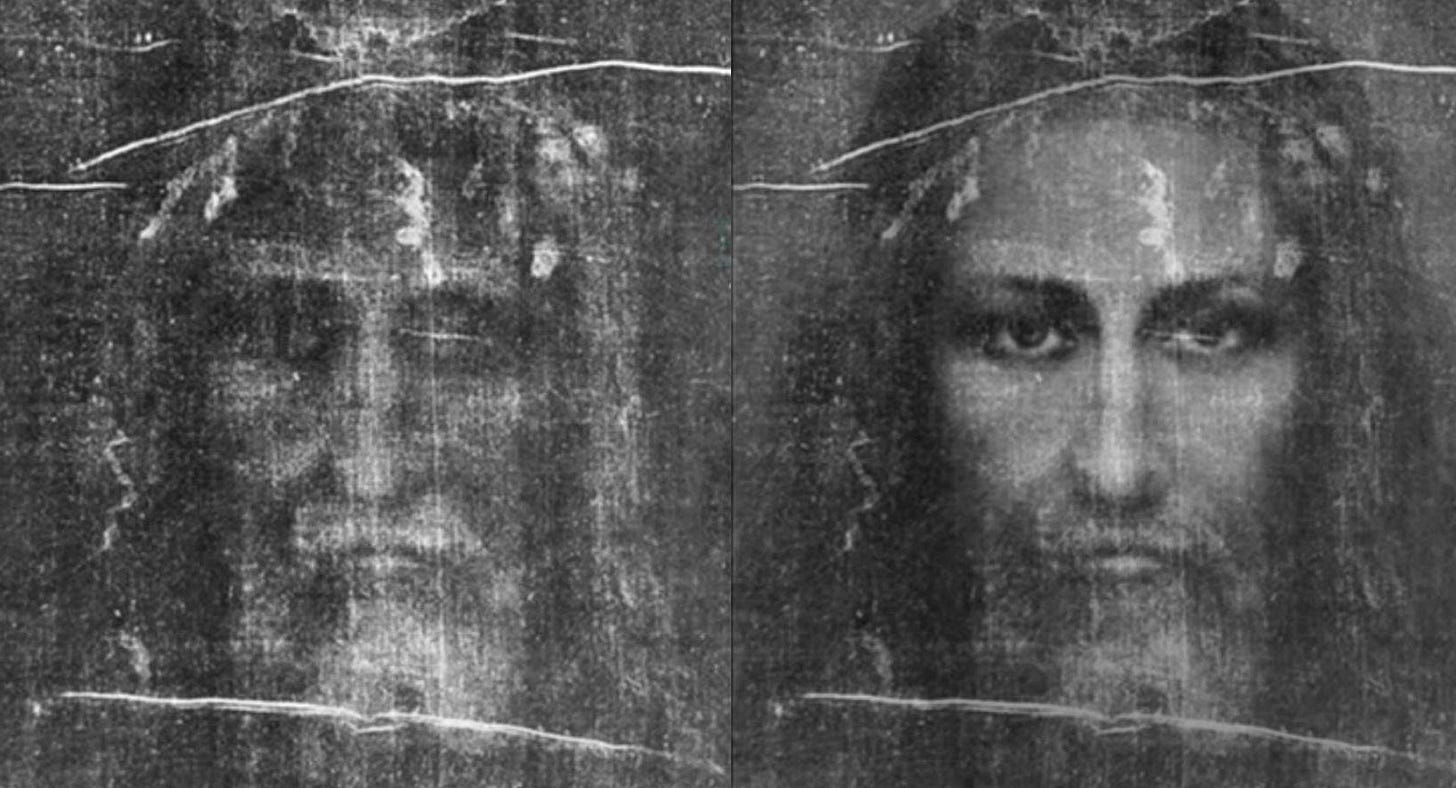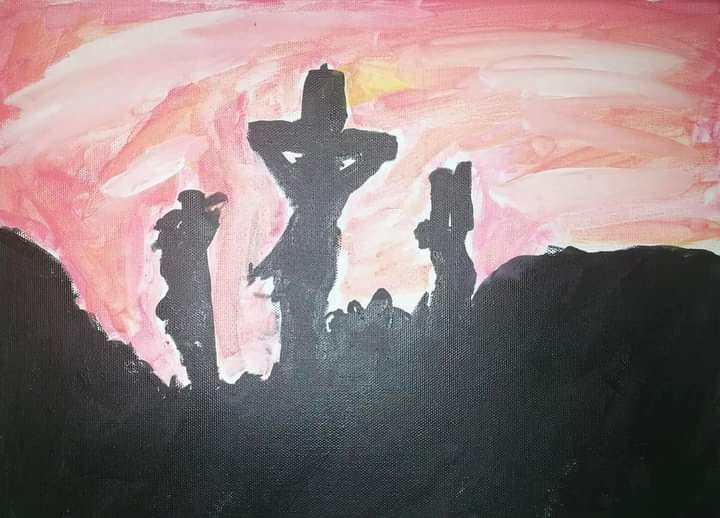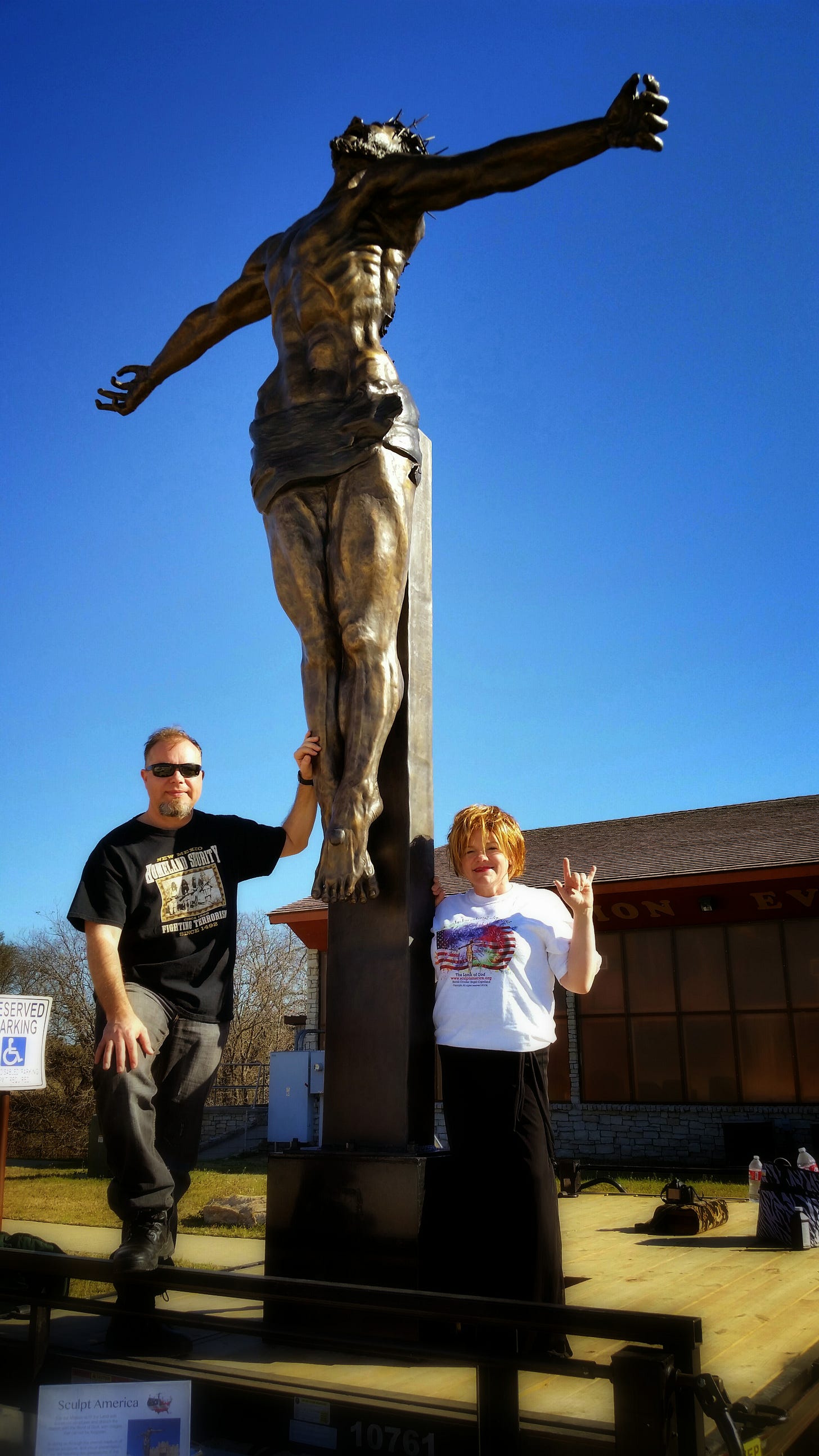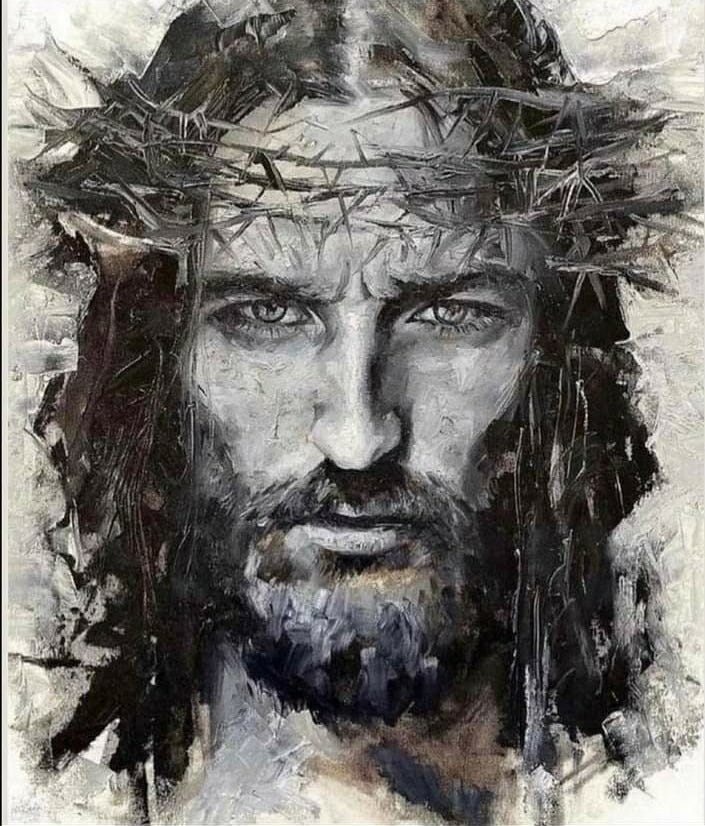IN THE GOSPEL of John, the writer is inspired to share details about the burial cloths of Jesus:
“Now the first day of the week Mary Magdalene went to the tomb early, while it was still dark, and saw that the stone had been taken away from the tomb. Then she ran and came to Simon Peter, and to the other disciple, whom Jesus loved, and said to them, ‘They have taken away the Lord out of the tomb, and we do not know where they have laid Him.’ Peter therefore went out, and the other disciple, and were going to the tomb. So they both ran together, and the other disciple outran Peter and came to the tomb first. And he, stooping down and looking in, saw the linen cloths lying there; yet he did not go in. Then Simon Peter came, following him, and went into the tomb; and he saw the linen cloths lying there, and the handkerchief that had been around His head, not lying with the linen cloths, but folded together in a place by itself. Then the other disciple, who came to the tomb first, went in also; and he saw and believed” (John 20:1–8).
With the biblical account in view, it is fascinating to consider 13 facts around the most studied artifact in history, an ancient linen cloth called the Shroud of Turin, which bears a detailed and anatomically precise image of a crucified man:
FACT #1: The image on the Shroud is a perfect “photographic negative,” meaning that when it is photographed, the negative shows a positive image. This is baffling because even skeptics acknowledge that the relic existed centuries before photography was invented.
FACT #2: A photograph of the Shroud produces a three-dimensional image when placed under a NASA image-analyzing computer. This means that distance-imaging information was somehow encoded when the image was formed. The photograph of the Shroud is the only known two-dimensional image on earth that displays this amazing property.
FACT #3: A recent study of high-resolution images of the Shroud revealed a phenomenon similar to action photography: superimposed views of one of the hands, a foot, and certain inanimate objects fixed to the corpse indicate that there was movement during the instant in which the image was formed.
FACT #4: The Shroud is sized according to the unit of measure used by first-century Jews, the cubit. It is exactly two cubits wide and eight cubits long. What’s more, while there are traces of cotton found in the Shroud, a by-product of various repairs made, there are no traces of wool, consistent with the biblical–Jewish law prohibiting the mixing of linen and wool (Deut. 22:11).
FACT #5: Blood stains on the Shroud are authentic human male blood, type AB. Type AB blood is the rarest of the four blood types, representing less than 4% of the population worldwide. However, a study of 68 ancient skeletons unearthed at Jerusalem from around 1,600 to 2,000 years ago, showed that more than 50% were type AB. If the Shroud is a medieval forgery as skeptics claim, it was an extremely astute forger who knew to use a common blood type for Jews living in Jerusalem around Jesus’ time, especially given that blood types were not even discovered until 1900.
FACT #6: The location of blood stains on the Shroud image correspond to what is known about the practice of Roman crucifixion. In Christian art from the Middle Ages, the era during which skeptics say the shroud was made, Jesus is depicted as having nails piercing his palms and feet. However, ancient skeletons of crucifixion victims show that the nails actually pierced the wrists and heels. The image on the Shroud has the nails piercing the wrists and heels, matching the actual Roman practice.
FACT #7: Traces of dirt and limestone on the Shroud match samples taken from tombs in Jerusalem. Furthermore, traces of pollen on the Shroud match flora specific to springtime in Jerusalem, the season and locale of Jesus’ burial.
FACT #8: Human DNA on the Shroud matches people groups from the region between Israel and Turkey, corresponding to the tradition that the Shroud was taken to Edessa (Southern Turkey) in the first century. Evidence that the Shroud was kept in Edessa is a writing by Syrian scholar Evagrius Scholasticus about an image of Christ “not made by hands,” which effected the miraculous defense of the City of Edessa against a siege by the Byzantine Empire in 544. The Edessa image, apparently the Shroud, became the model for all Byzantine and Orthodox icon images of Jesus that followed.
FACT #9: The Shroud corresponds to the biblical account of multiple cloths and a handkerchief found in Jesus’ tomb:
“And [Peter] went into the tomb; and he saw the linen cloths lying there, and the handkerchief that had been around His head, not lying with the linen cloths, but folded together in a place by itself (John 20:6, 7).
Close examination of the Shroud shows that a three-inch wide, full-length strip sewn onto the side was part of the original cloth, which was cut off and later sewn back into its original position. Using life-sized models of the body and Shroud, researchers have shown how the once separate linen strip was used to fasten the Shroud to the deceased: it was first tied around the feet, then wrapped around the knees to keep the legs together, then around the torso, and finally around the head, where it was fastened beneath the chin.
Besides the three-inch strip, there exists a separate facecloth, or handkerchief, known as the Sudarium of Oviedo, which bears pre-mortem and post-mortem blood stains matching precisely the blood stains on the face area of the Shroud. Significantly, the facecloth does not have an image on it like the Shroud. This fits the biblical narrative of the handkerchief being “folded and put aside” (John 20:7) before the Shroud was placed over the body and the image presumably formed.
The Sudarium facecloth—a perfect forensic match to the Shroud—has a traceable history going back to at least 570 AD.
FACT #10: Exhaustive testing of the image on the Shroud shows no evidence of pigments, dyes, or any scorching or photographic process that would indicate an artistic forgery. Furthermore, the image is not the result of natural decay as no decay products are found on the Shroud. Based on the inimitable characteristics of the image, researchers believe it was formed by an extremely brief and intense burst of vertically collimated radiation emitted by the body wrapped in the Shroud. This radiation produced a static discharge from the top fibers facing the body, causing heating in a very thin surface layer on the fibers, which resulted in molecular damage to the cellulose in this thin layer. With the passage of time and possibly exposure to ultraviolet light, this thin damaged cellulose layer on the fibers gradually darkened to form the image of the crucified man on the Shroud.
Remarkable Calendar Coincidences
Fact #11
The Bible mentions the redemption of Israel after 70 Sabbatical “weeks” (Daniel 9:24). Remarkably, the year 2025 marks precisely 70 weeks since the Shroud narrowly survived a devastating fire in Chambéry, France, in 1532. During this incident, molten silver from the Shroud’s storage container burned symmetrical holes into the cloth, creating distinctive scorch marks. This 70th-week timing correlates symbolically with prophetic references to Israel being refined “as silver” through the fire (Zechariah 13:9; Malachi 3:2–3).
Fact #12
Another extraordinary coincidence surrounds the year 1898, when Secondo Pia captured the first photographic image of the Shroud, dramatically revealing its unique negative properties. Notably:
Strong’s Greek Concordance entry #1898 is "epeisagoge," meaning "introducing a new element that enhances what is already present," fittingly describing Pia's photo enhancing the faint image already on the Shroud.
Exactly one Jubilee (50 years) from 1898 is 1948, the year marking the establishment of Israel, a pivotal event (Matthew 24:32–34).
Counting one biblical generation (80 years, Psalm 90:10) from 1898 leads to 1978, the year when the Shroud of Turin Research Project (STURP) conducted extensive scientific examinations:
The preliminary STURP examinations by physicist John P. Jackson began during a calculated Jubilee year, 1976.
STURP included 33 scientists, corresponding symbolically to Jesus' age at crucifixion and resurrection.
The examination lasted approximately 120 continuous hours, resonating with the 120 Jubilees of God’s 6,000-year plan and the 120 believers at the Church’s first Pentecost (Barnabas 15:3–9; Acts 1:15).
Significantly, the research concluded on the Day of Atonement (October 13, 1978), directly linked to the Jubilee and Christ’s atoning sacrifice (Leviticus 25:9–10).
Fact #13
The timing of Pia’s groundbreaking 1898 photograph aligns precisely with Pentecost, the festival commemorating the Holy Spirit’s descent upon the early Church (Acts 2). Initially unsuccessful due to lighting issues, Pia returned for a second attempt on the evening of May 28, coinciding with the start of Pentecost. Around midnight, while developing the negatives, Pia revealed the astonishing, detailed image of the crucified man:
Pentecost symbolizes Christ’s promise of the Holy Spirit as a wedding pledge to His Church (Acts 2; Ephesians 1:13–14).
The midnight timing parallels the story of Boaz and Ruth, typologically representing Christ and His Church (Ruth 3:8–13).
Midnight also symbolizes the anticipated return of Christ, the Bridegroom, gathering His Church (Matthew 25:6).
Further details on the Shroud:
Made of professional-quality flax from the Eastern Mediterranean.
Stitching identical to Masada artifacts (40 BC–AD 73).
Chemically verified human bloodstains (AB, MNS antigen).
No paint pigments detected, ruling out artistic forgery.
Features precise Roman crucifixion wounds.
With the above facts in view, I believe that the Shroud of Turin most likely bears the image of the One who . . .
Was born in a stable
Healed the sick
Fed the hungry
Raised the dead
Walked on water
Calmed the storm
Forgave sinners
Cast out demons
Died on a cross
Rose from the dead
And ascended to heaven
Jesus is alive, and He is coming back soon! When He appears, we will become like Him. The same incomprehensible burst of light and energy that emitted from His beaten and bloodied corpse to produce the image on the Shroud will emit from those who have received Him as Lord. In a moment, in the twinkling of an eye, believers will be miraculously caught up with Him in the Rapture, and those who have died will be raised (1 John 3:2; 1 Cor. 15:52).
To receive Jesus as Lord, place your trust in Him. Ask Him to be your Savior. Believe that He is the Son of God who died for your sins and was raised from the dead.
The tomb is empty.
Trust Jesus today.
Time is short.
Author with artist Brenda Angel and her bronze sculpture
NOTES:
1. Shroud website: http://www.shroud.com/
2. General forensic analysis of the Shroud: https://whocanhebe.com/Forensic_Evidence.html
3. Video discussing the action-photography effect, indicating movement of the body during the creation of the shroud image:
4. Blood on the Shroud: http://shroudofturin.weebly.com/blood-evidence.html
5. Blood-typing of ancient skeletons from Israel:
https://pubmed.ncbi.nlm.nih.gov/888938/
6. Flawed radiocarbon testing: While a radiocarbon test in 1988 dated the Shroud to only around 1260–1390 AD, these test are disputed on the basis that they were contaminated by fibers from cloth used to repair the shroud when it was damaged by fire in the Middle Ages.
7. Image of Edessa: https://en.wikipedia.org/wiki/Image_of_Edessa
8. Sudarium of Oviedo – History and Relationship to the Shroud: https://www.shroud.com/guscin.htm
9. Image formation hypothesis: https://0201.nccdn.net/1_2/000/000/174/1a8/how-the-image-was-formed-on-the-shroud.pdf
Jubilee calculations referencing Leviticus 25:2.
Lifespan definition from Psalm 90:10.
Day of Atonement dating calculation (1978).
Pentecost dating calculation (1898).
Meaning of Secondo Pia’s name: https://en.wikipedia.org/wiki/Secondo_Pia
Secondo Pia’s photographic session details: https://www.shroud.com/colleg10.htm
Thank you for reading Dr. Aaron Judkins Substack. Your subscription supports my work and allows me to bring you more articles like this.
As a token of our appreciation, we're offering you a limited-time offer of 20% off a paid subscription for your first year.
Thanks again for reading.
PS. If you loved this article, be sure to head over to our Ancient Pathways Patreon site and check out the “Hunt for the Red Heifers” on Coast to Coast AM.









